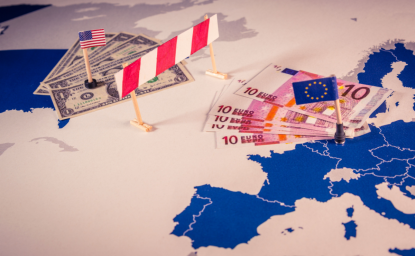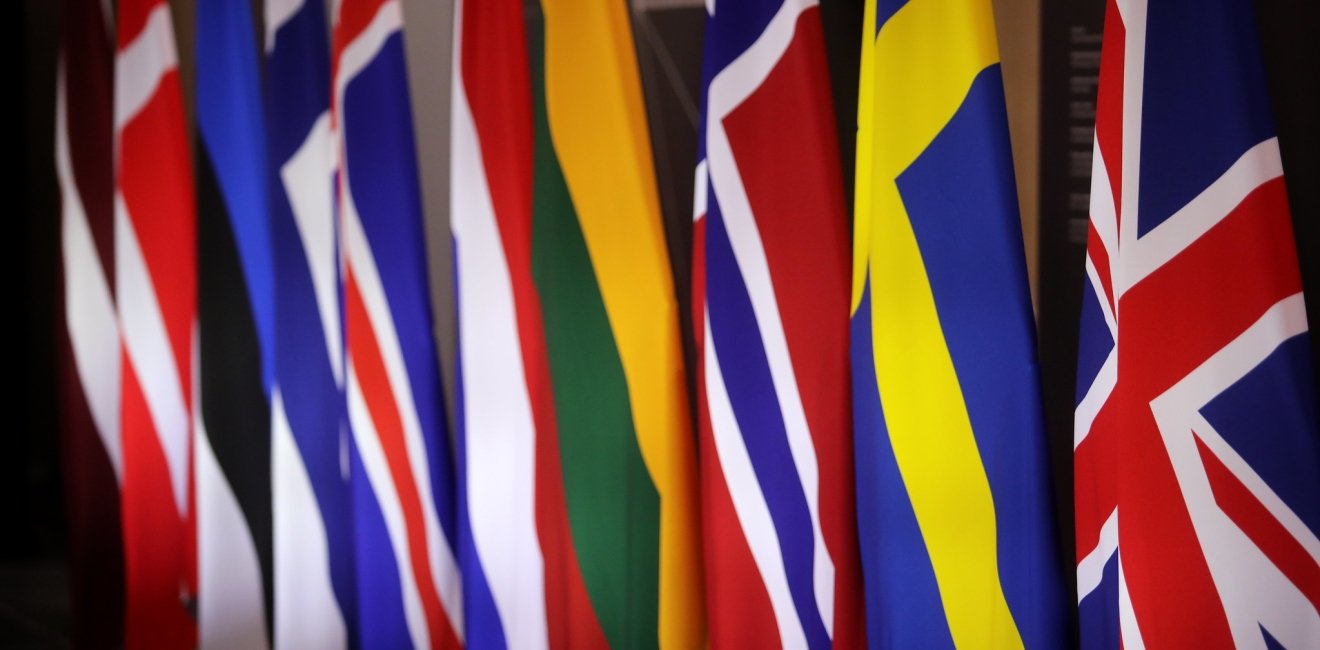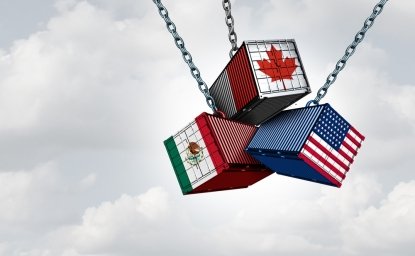The Joint Expeditionary Force (JEF), a minilateral defense framework led by the United Kingdom, celebrated its ten year anniversary this September. The JEF coalition has grown in recent years and now consists of the United Kingdom, the Netherlands, the three Baltic states, and the five Nordic countries. While the JEF might fly under the radar for many in Washington, it has played a pivotal role in providing another layer of security for Northern Europe, complementing NATO activities, and enhancing partner exercises in the Baltic Sea. In particular, the JEF framework further enmeshed Finland and Sweden in Europe’s security architecture prior to their NATO membership and made the accession process even easier. But with both Finland and Sweden now a member of the NATO alliance, what role will this framework play moving forward? And what has been the legacy and benefits of this unique grouping of countries for Northern European security? Ultimately, the JEF will continue to offer a highly capable configuration that acts in complement to NATO, enhances security in the Baltic Sea region, and further raises the threshold for Russian aggression in Northern Europe.
The JEF framework was conceived in 2012 and formally launched at the NATO Wales Summit in 2014. Although the Wales Summit is best remembered for its 2% defense spending target, another means to address burden sharing announced at this summit was NATO’s Framework Nations Concept, an initiative where a lead framework country would coordinate a multinational force of NATO and non-NATO allies. Speaking in 2012 at its launch, General Sir David Richards, Chief of the Defence Staff described the JEF as being able “to ‘punch’ hard and not be a logistical or tactical drag on a coalition, we will be especially welcomed by our friends and feared by our enemies.” The UK announced the JEF, while Germany and Italy also lead their own groupings through the Framework Nations Concept, although their contributions are far less visible. Italy, through its framework, leads Albania, Austria (a NATO partner), Croatia, Hungary, Slovenia, Montenegro (since 2019), and North Macedonia (since 2021) with the goal of bolstering stabilization operations. The German-led initiative, which has grown from 10 members to 20, has a two-pillar approach: 1) closing capability gaps and 2) creating a larger multilateral framework with Germany at the core. However, both Germany and Italy’s FNC contributions have major shortcomings: in particular they lack branding, a consistent drumbeat of activity, and political identity in contrast to the JEF. The JEF has maintained a high tempo of activities and cohesive branding even as its membership has grown over the years, adding Finland and Sweden in 2017 and Iceland in 2021. Sweden and Finland’s decision to join in 2017 came at a time when NATO membership seemed like a distant fantasy. Ukraine was formally invited to observe JEF exercises in 2024 and 2025. The framework became fully operational in 2018 and has since become an invaluable part of Europe’s security architecture.
The largest overall benefit of the JEF has been the deepening of military ties and interoperability between the Baltic nations, the UK, the Netherlands, and the Nordics. The UK’s consistent commitment to the JEF format, in particular, has been a large driver of its success. The JEF has been a net contributor to security in the Baltic Sea region through its regular exercises and patrols. JEF forces have contributed to BALTOPS (a NATO-led exercise held annually since 1972) and in recent years spearheaded its own patrols. Since December 2023, the JEF Response Operation NORDIC WARDEN has patrolled the Baltic to secure critical undersea infrastructure following the sabotage of the Balticconnector pipeline and data cable connecting Finland and Estonia. The JEF has emerged as a leader in protecting critical undersea infrastructure in the region, addressing hybrid threats, boosting energy security, and responding to threats falling below the threshold of NATO’s Article 5. Although the JEF is outside of NATO’s command structure, it shares all of its members with the Alliance for the first time in 2024 with Finland and Sweden now NATO Allies and serves to bridge the split in command between NATO’s Joint Force Commands. NATO has three Joint Force Commands–JFC Brunssum (in the Netherlands), JFC Naples (in Italy), and JFC Norfolk (in Virginia). JFC Brunssum includes the Baltic States and the Netherlands, while the Nordics and the UK will likely fall under JFC Norfolk. This operational split within NATO of the Baltics and the Netherlands under a different command than its Nordic neighbors is at least partially remedied by the JEF and allows greater interoperability across the Baltic Sea.
The JEF recognizes the centrality of NATO as the ultimate guarantor of European security and is not a duplication of capabilities. Instead, the JEF is a dynamic and flexible format capable of providing deterrence in Northern Europe. Included in all official language released by the JEF is a preference for NATO to act first, with the JEF framework as a back-up in case the entire Alliance is unable or unwilling to respond. It is one of many minilateral formats that have emerged in Europe in recent years–from AUKUS to the Visegrad Group–diversifying and multiplying the potential groupings and coalitions for countries to work together. Arguably, one of the main added values of the JEF framework to reflect on as it celebrates its tenth anniversary is the steps it took to integrate Finland and Sweden prior to their NATO membership in 2023 and 2024, respectively. Both countries have been members of the NATO Partnership For Peace program since 1994 and were often described as model partners. Despite their close cooperation with NATO and their preference for adhering to alliance standards (such as Finland’s decision in 2021 to purchase F-35s), it was never a given that they would seek to join the NATO Alliance. Russia’s illegal invasion of Ukraine in 2022 prompted both countries to apply, reaffirming the Alliance’s “open door policy”. The JEF contributed in a small part to making Finland and Sweden–both of whom have highly capable militaries and are net contributors to NATO–by increasing their interoperability through joint exercises. Despite the fact that all ten JEF nations are now in NATO for the first time in 2024, the framework still provides a critical function as a minilateral configuration capable of rapid response in the event of a crisis.
Looking forward, the JEF will endure as a flexible framework to promote security in Northern Europe and the Baltic Sea. At their annual meeting in 2023, JEF representatives put forward a vision reaffirming the continued role of the framework. Since Russia’s invasion of Ukraine in 2022, the JEF nations have undertaken more than eight times as many activities as in the preceding eight years. There has been little appetite to expand the core framework beyond Northern Europe, in part to retain the focused nature of the minilateral grouping. Maintaining a focused cohort of militaries–many of which are some of the most capable in Europe–with a specific sub-regional mandate has been the secret behind the JEF’s success for the last decade. The JEF could serve as a model to be replicated in the Mediterranean or Black Sea to similarly expand NATO and non-NATO military cooperation. Given the flexible nature of the framework, it is highly exportable so long as there is enough strategic interest and a capable lead country.
The UK-led Joint Expeditionary Force has been an unsung contributor to defense and deterrence in Northern Europe for a decade. Despite Finland and Sweden’s decision to join NATO in 2022 resulting in a full overlap in membership, the JEF still provides a complementary and necessary function in 2024 and beyond. The security environment in Europe is more uncertain now than since the height of the Cold War, requiring more dynamic and flexible solutions. The JEF is one such option, a clear indicator of a framework nation–the United Kingdom–stepping up to coordinate and lead in Northern Europe. As discussions over the future of Europe’s security architecture multiply and increase in intensity, the JEF will surely be singled out as a model for cooperation between NATO and non-NATO countries and will hopefully be replicated elsewhere in Europe to raise the threshold for future Russian aggression.
Author


Global Europe Program
The Global Europe Program is focused on Europe’s capabilities, and how it engages on critical global issues. We investigate European approaches to critical global issues. We examine Europe’s relations with Russia and Eurasia, China and the Indo-Pacific, the Middle East and Africa. Our initiatives include “Ukraine in Europe”—an examination of what it will take to make Ukraine’s European future a reality. But we also examine the role of NATO, the European Union and the OSCE, Europe’s energy security, transatlantic trade disputes, and challenges to democracy. The Global Europe Program’s staff, scholars-in-residence, and Global Fellows participate in seminars, policy study groups, and international conferences to provide analytical recommendations to policy makers and the media. Read more

Explore More
Browse Insights & Analysis
Future Forward: What is Next for US-Africa Trade?



